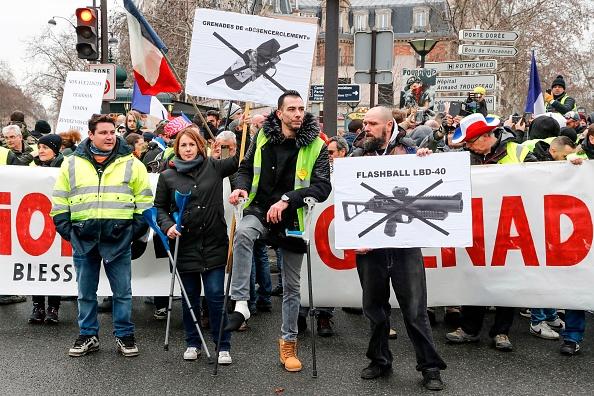PARIS—An estimated 125,000 yellow-vested protesters took to the streets in France on Dec. 8 to vent their anger against the government as riot police tried to contain the protest that has grown by the week. Although the number of protesters swelled compared to the previous week, there was less violence and destruction throughout the country.
A ring of steel surrounded the president’s Elysee Palace—a key destination for the protesters—as police stationed trucks and reinforced metal barriers throughout the neighborhood.





